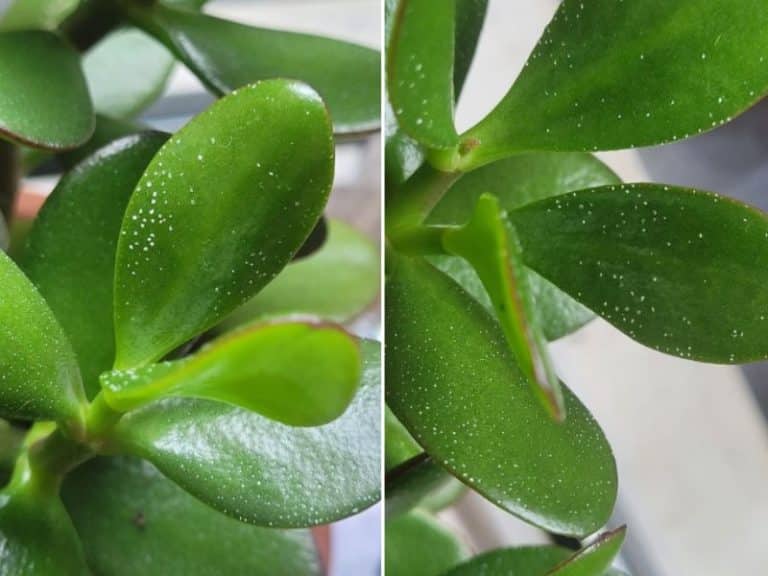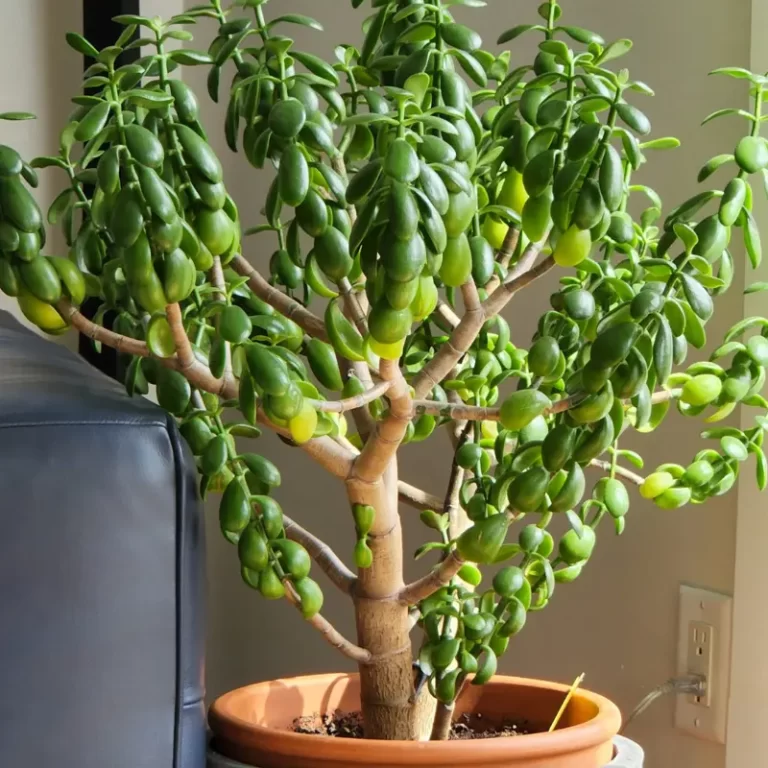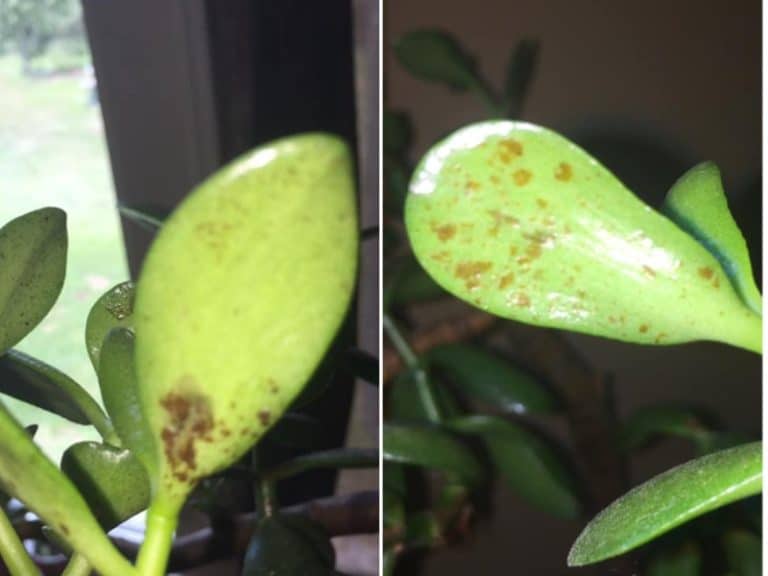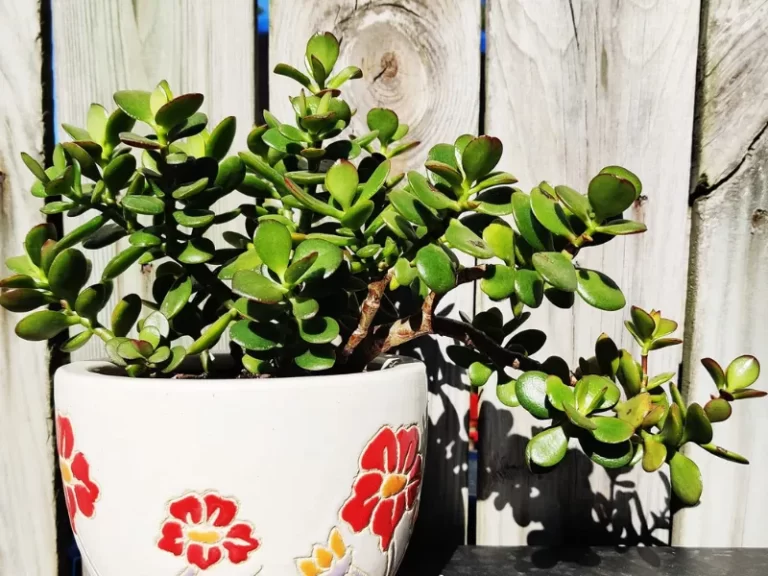How to Fix a Leggy Jade Plant, Make it Bushy & Thicker
A jade plant (Crassula ovata) can live for over 50 years, but that depends on the quality of care you give the plant. I occasionally look after a friend’s jade that she inherited from her granny. It is about 38 years now, and as soon as it was under new care, the jade became leggy and frail.
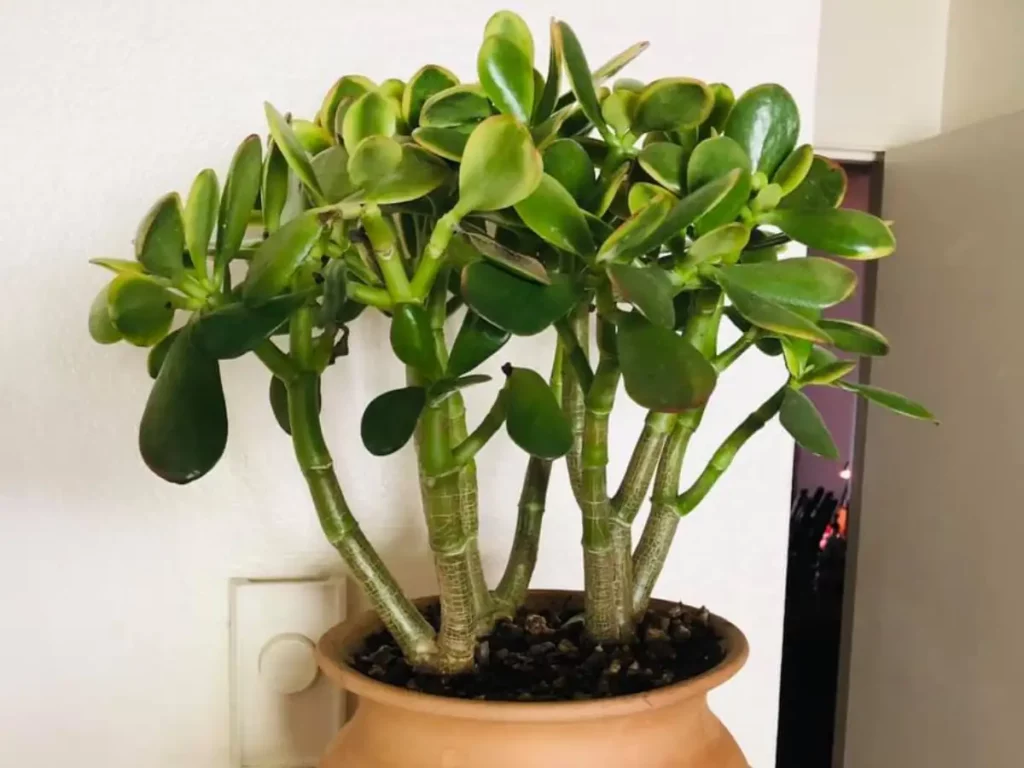
Most people don’t realize that a change in care routine or even location can affect a plant’s health. In the case of leggy jade plants, the culprits are most likely sunlight, water, and pruning issues.
If you love jade plants but don’t know much about their advanced care, I’ll bring you up to speed on the best care practices and fixes to revive your leggy and make it bushy again.
Let’s get right to it.
Key takeaway:
Legginess is a sign of insufficient sunlight as the jade’s stems ‘stretch’ to reach for light. Encourage a bushy, compact shape by pruning back any long, bare stems. Cut just above the leaf nodes to promote bushy regrowth and branching.
Going forward, place the plant in a spot where it will receive bright, indirect light to maintain its dense, bushy form. I recommend a south-facing window.
Why is my jade plant so leggy and floppy?
- Insufficient light:– Without enough light, jade plants stretch and grow taller to reach light. The stems and leaves become spaced far apart, and the plant becomes top-heavy. You’ll notice growth on the plant focused more upward instead of outward.
- Infrequent pruning:- Lack of pruning encourages the plant to grow in one direction – upward, which leads to legginess. I prefer pruning these succulents periodically to encourage bushy growth.
- Excess nitrogen:- overfertilization with nitrogen leads to increased foliage, elongated stems, and lack of blooms. This imbalanced growth can cause weak, leggy growth.
These three are the main reasons for the undesirable elongation in jade plants. If you pay attention to your plant’s needs, you’ll quickly observe and fix these issues early enough.
Read my detailed guide: Jade Plant Care 101 – Everything You Need to Know.
How to make a leggy jade plant bushy
Jade plants are slow growers, so some beginner plant moms and dads think legginess is a good thing because the plant appears to grow tall faster.
Wrong! In reality, plants make a substance called lignin that makes their stems tough and woody. It’s like the “skeleton” that holds the plant up.
When stems don’t get enough sunlight, they grow tall fast but don’t have time to build up as much lignin. So those leggy stems will be weak and wobbly, like a floppy straw because they don’t have enough woody lignin to keep them standing nice and tall.
A weak and leggy jade is unsightly and can break easily. Here’s how to fix it and make your jade plant bushy.
Things you’ll need include bypass pruners and rubbing alcohol.
Step 1: Assess the plant first
The first thing I do with a leggy jade is to assess the actual cause before trying to rectify the problem. Ask yourself – Are there sections where growth has gotten lanky and weak?
If yes, I recommend identifying the tallest, leggiest stems that need cutting back. Often, this excess growth is toward the top.
Step 2: Water the plant prior to pruning
Hydrate the plant enough before pruning to set it up for proper recovery after the fact. Remember, we want to avoid stressing the plant as much as possible during this period.
Plants lose water through transpiration, which is why I don’t recommend watering after pruning, as you’ll have reduced the foliage that’s needed for losing the excess water.
Step 3: Prune the jade plant
Pruning is the actual fix that’ll make your jade plant bushier.
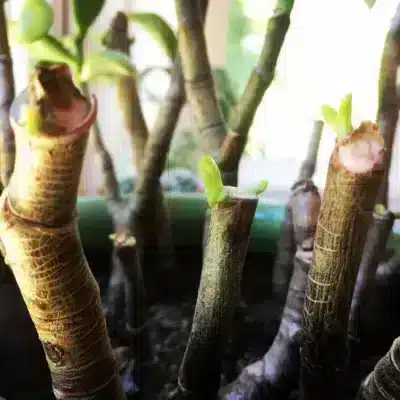
Using sharp, sterilized pruning shears, cut back leggy stems just above the joint of a healthy, shorter section. Remove at least half of the plant. Prune as much as possible without fear of killing the plant.
Jade plants are very hardy and resilient succulents. I’ve cut down almost all the branches of a jade plant, and it is still fine, growing back bushier and stronger. However, I’d recommend cutting back no more than 25% of the plant at a go to avoid weakening the plant further.
The plant will grow back bushier and healthier as long as you don’t overwater it. Two new branches should sprout at the spot where you pruned. Therefore, when selecting the spot to cut back, ensure it is based on where you want the jade plant to grow thicker.
If you’d like to propagate the cuttings into new plants, ensure you leave them out for 2-3 days until the cut ends form calluses. This prevents rotting.
After callusing, stick pruned stems in pots of sandy soil. With enough sun and time, you’ll get new baby jade plants.
Step 4: Pinch off the tips
Pinch off the growing tips of the remaining stems using your thumb or forefinger. This will encourage two new branches to sprout from the pinched spot.
This method works best for young jade plants or short stems you want to encourage thickening.
Step 5: Place the jade in a sunnier spot
Jades thrive in very bright light. Moving your plant to a spot with at least 6 hours of direct sun per day will ensure the fresh growth that emerges is nice and compact.
I recommend a west or south-facing window where the jade plant will receive at least four hours of sunlight daily.
Also, note that jade plants enjoy warmth. Temperatures between 65˚F and 75˚F during daytime and 50˚F and 55˚F during the night are ideal.
Step 6: Feed the plant to encourage new growth
When rehabilitating a leggy jade plant through aggressive pruning, go easy on fertilizing. While jades are actively growing in spring and summer, use a balanced succulent fertilizer at half strength every 2-3 months.
But after pruning, I recommend holding off on feeding until you see vigorous new growth. Fertilizer – whether liquid or granular – can burn fresh wounds.
Once your jade thrives again, resume light feeding to fuel its growth spurt. Aim for a controlled recovery by not pushing it with excess nutrients too soon.
Fertilize your jade plant once every three to four months with a liquid houseplant fertilizer. Wait for months before feeding repotted jade plants.
Giving your jade plant these favorable conditions will help it grow fuller and thicker.
How to Thicken the Trunk
Thickening your jade plants’ trunks and stems gives them a strong base from which the rest of the growth will emerge. Pay attention to its needs right from the time of propagation to ensure the stems and trunk don’t elongate too much.
An etiolated jade plant occurs when you start seeds without adequate lighting. The seedlings then grow with a long, weirdly thin, pale stem.
Here are the things to do to help the plant grow thicker trunks:
Provide more light
Place your jade plant where it will receive much light, even if it is not always direct. More light means proper development of the woody substance, which prevents etiolation.
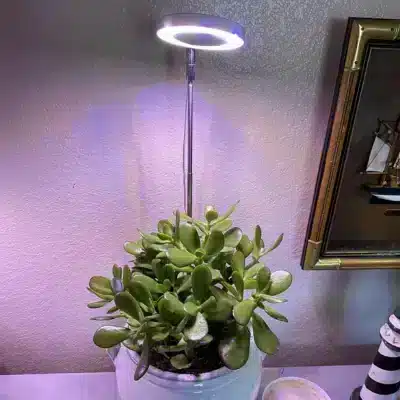
Take caution, though, because overexposure to sunlight can also lead to sunburn on your jade plant.
Remember, jade plants do not like cold drafts but enjoy the warm breeze. Move them away from cold drafts during frigid winters to protect them.
Prune the long and disruptive stems
Look over your jade plant and note the stems that disrupt the overall bushy shape of your jade plant, branches that appear too long to be supported, and the brunches that are bending down, touching the edge of your pot. Prune these stems out from where they are attached to the main stem.
Repot your jade plant
Using succulent potting soil, transfer the jade plant once the plant has outgrown the pot. Repotting goes a long way in supporting healthier, thicker growth.
Support the trunk
Insert a cylindrical rod as tall as your plant into your pot an inch away to support your jade plant. Use flexible plant ties to make the main stem stable with support.
Water jade plants regularly
Watering your jade plant once a week from mid-spring to mid-fall is okay for healthy growth. However, always let the soil dry out between waterings.
During winter, cut back on the water to about once every 6 to 8 weeks.
Feed your jade plant
Fertilize during the active growing season in spring and summer when the plant rapidly produces new growth. A balanced 20-20-20 fertilizer is recommended at quarter to half strength. Cease fertilizing in fall and winter when growth slows.
I prefer sprinkling slow-release fertilizer pellets on top of the potting soil so nutrients are continuously available.
Give it time
Finally, give your jade plant time. They’re slow growers, so the stem will thicken over time with proper care and maintenance.
Further reading


